You’re never too old (or young!) to start fishing.
And just because your father or uncles didn’t teach you how to fish doesn’t mean you can’t utilize the vast resources of the online community of anglers to learn a new skill!
Anglers refer to fishermen, but you’ll get the hang of the lingo soon enough.
All you need to fish is basic equipment: a rod, a reel, and a good dose of patience.
There are so many different kinds of fishing these days, and not all of them require you to sit around on a sunny day waiting for fish to bite the line.
With technological advancements, fishing is as adventurous and exciting as any sport.
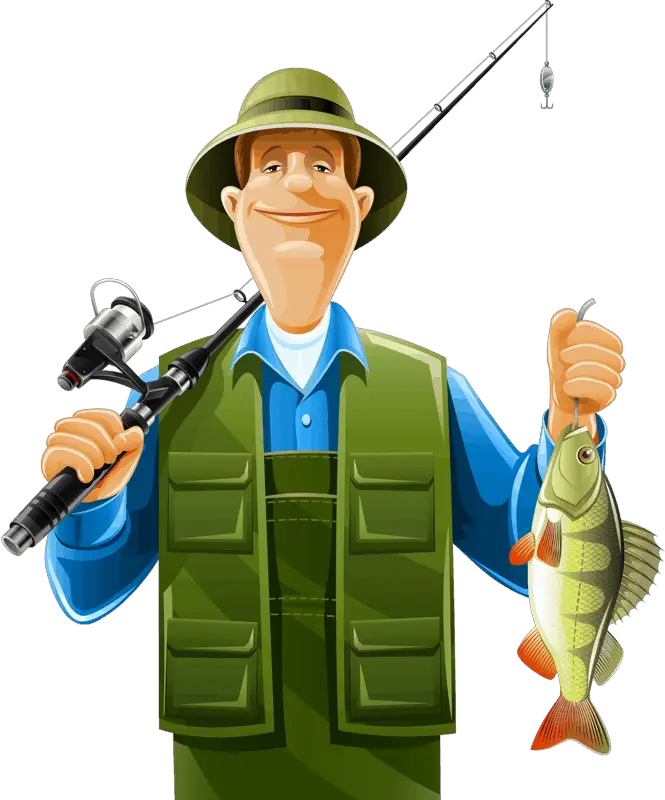
Don’t believe me? Watch this episode to see how some of the strongest men fare while battling 400lbs goliath groupers! Exciting, to say the least.
Getting into fishing can seem challenging in the beginning. Even if you buy all the right equipment, it’s daunting to go out and start fishing all by yourself when you don’t know how to go about it.
There’s the added stress of not looking like an amateur in front of your more experienced fishing friends!
Thankfully, there’s a lot you can learn online about fishing. This article will be your Fishing 101 class and prepare you for almost everything you need to know!
Let’s get started.
Table of Contents
Chapter 1: Getting into fishing

The danger of fishing without a license, i.e., illegally, is that you could face some pretty hefty fines and have your precious equipment confiscated.
An unnecessary embarrassment can easily be avoided by making sure you always have your license on hand.
You can apply for a license online on the state website. Here’sa resource to select your state, which redirects you to the official website to apply for and purchase your license.
It’s really quick and easy to acquire a fishing license. It also contributes to conservation. In the United States, 100% of your fishing license amount goes to conservation and restoration funds.
There are two kinds of licenses. You can either get a One Day license, which will usually cost you below $20.
It also depends whether you’re a resident of the state you’re fishing in because it’s much cheaper for locals.
If you’re serious about getting into fishing, it makes much more sense to invest in an annual pass.
That amount depends on which state you’re in, but it can be as low as $30 (and goes up to around $150)
Chapter 2: How to Choose Bait

So you’ve got your license and chose some basic tackle (equipment).
It’s recommended to go with a simple spinning rod and reel combo since it’s affordable and an excellent place to start out when you’re learning.
Since you’re just learning how to fish, this guidebook will focus on using a spinning reel and rod. An inline reel, fly fishing, or any other kind of reel is generally for someone wanting to refine their skill and specialize in a particular type of technique.
Now that we got that out of the way, we now come to the bait.
There is no one-size-fits-all with bait. As soon as you visit your local tackle store, the sheer variety will prove how tailor-made bait can be for the different fish you want to catch.
It can be really frustrating to have a dry day while fishing. You’re sitting for hours while sticking out the fishing rod, waiting desperately for something to bite the line.
While there’s no doubt about the fact that fishing tests your patience, the worst part can be when you don’t know what you’re doing wrong.
There can be a couple of factors to blame. If your rod isn’t sensitive enough and you’re not using a bobber, fish might be biting without you knowing! Sometimes it’s the spot you’re in.
In lakes where fishing has happened for a couple of seasons, fish can get wary and suspicious. They can even be scarce.
A significant factor, however, has been the kind of bait you’re using. If the fish don’t like the look of your bait or can’t smell it, you may be losing out.
It’s always advisable to do your research on the kind of bait your fish likes the most. And carry a range of baits and lures so that you can keep swapping them during the day to test your luck.
Artificial VS. Live Bait
Know which fish you’re going to encounter in your chosen fishing location. If you’re freshwater fishing in a river or lake, you will do well with artificial bait and lures.
In saltwater fishing, live bait attracts fish much more.
Size
The size of your bait matters a lot. Don’t forget that bait has to closely resemble the actual food of the fish you’re trying to catch.
If it’s too big, your fish might get intimidated and won’t try to eat it. If it’s too small, your fish may not think this meal will fill him up and swim away.
Luckily you won’t have to do guesstimating what your fish’s favorite meal is. Most baits are labeled according to the fish they’re intended for.
So if it’s rainbow trout or panfish, make sure you search for the bait made for them!
Color
You might be surprised to know the color of your bait matters as well. We want the color of the bait to be noticeable enough for the fish to see it, but not so bright and fluorescent that the fish doubts it’s even food.
Stick to what the natural habitat looks like. If you’re offshore fishing in coastal areas, you can use more brightly colored bait that resembles the ocean fish.
In lake fishing, look for muted and natural-colored bait.
Motion
You also have to mimic nature when it comes to choosing moving bait. Remember, the idea is to make the fish as least suspicious of the bait as possible.
Fish move slower in colder temperatures and are far more aggressive and swift in the summer. Choose a moving bait that resembles the speed and motion of the rest of the fish in the water.
Chapter 3: How to Cast
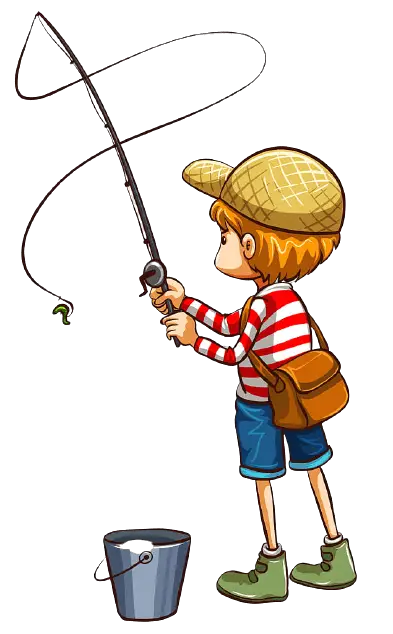
Casting with a spinning rod is almost as simple as you’d imagine it to be.
Still, it has to be done with the correct technique, or you run the risk of scaring off the fish with too many attempts.
Ideally, you should cast in not more than two tries. This ensures you don’t disturb the water or alert any fish.
Practice casting when you’re not going to be fishing in the same body of water.
So how do you cast?
The spinning reel has the line spooled in, and it has a thin wire arm called a bail on it, which stops the line from spooling out.
If you’re a bit confused, think about it this way: your toilet paper roll has lots of toilet paper spooled in.
Why does my fishing line unravel?
If you throw it into the air, it’s most likely going to come loose and unravel mid-air. That’s what we want the line to do from the spool.
The bail has to be locked in at all times to make sure the line doesn’t move around.
When casting the line, first make sure the line is dangling at a few inches from the rod. Now, flip the bail and cast the line as far as you can.
This is pulling the rod back and flinging it with force at the lake. The weight of the lure will pull the line as it unravels into the water.
As soon as the line is cast, flip the bail back, so it locks the line into place.
With practice, you’ll be able to cast more accurately!
Chapter 4: How to Set a Hook Effectively
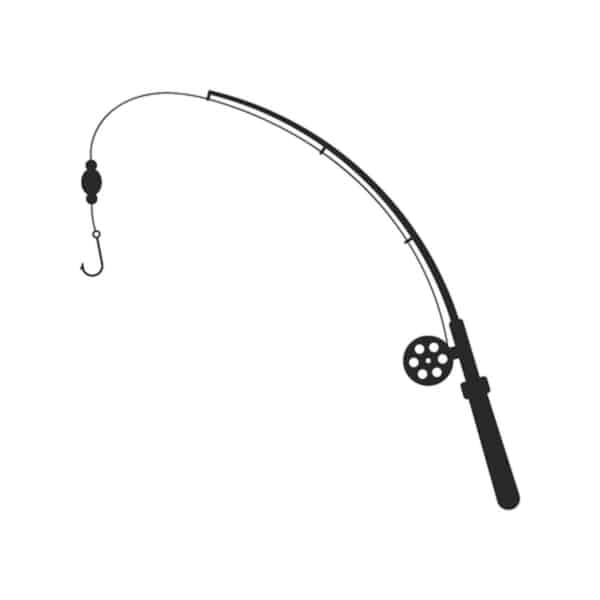
When to set your hook
Now that your line and bait are in the water, you’ll be waiting for some time before a fish comes along and decides to bite your bait/lure.
Do bobbers scare fish?
No bobbers don’t scare fish. Fishing rods are built to be sensitive enough for you to feel when a fish is nibbling at your bait.
Since you’re a novice, we also recommend getting a bobber, which will indicate whether the bait is really bitten or not.
There’s a difference between a fish bumping into your bait, suspiciously touching it, and actually trying to eat it. The former will feel very light, almost like the water’s current, while the latter is a distinct tug.
Of course, this depends on the size of the fish. It’s tricky when you’re fishing for small fish because their bites are much lighter and difficult to detect.
How to set your hook
There is a small window of opportunity to set the hook. This is when the fish has well and truly bit your bait.
If you’re too early and set the hook before the fish bites, the fish will be scared off.
If you’re too late, the fish would have bitten the bait and either spat it out or escaped with it.
We need to act fast once you’re sure the fish has bitten and yank the rod upwards in a swift motion. This jerking of the rod will ensure that the hook is set into the fish. However, if you’re too forceful, it can rip through the flesh of the fish itself.
Most hooks are sharp enough to pierce through the fish’s flesh, and a simple flick of the wrist is enough to set the hook in securely.
How to take a fish off the hook without touching it
If you’re catching and releasing (as some regions mandate), you’d need to use a circle hook that is much more gentle on the fish.
It’s important to remember that there is no need to ‘set the hook’ when using a circle hook as it is already lodged in the fish’s mouth. In fact, trying to flick the rod up will most likely set the fish free from the hook.
Since this is the opposite of conventional hooks, it’s very common for experienced anglers to lose a lot of fish when using the catch and release method.
You have the advantage of not having any previously formed habits and can practice both methods while being mindful!
Chapter 5: How to Reel in Fish
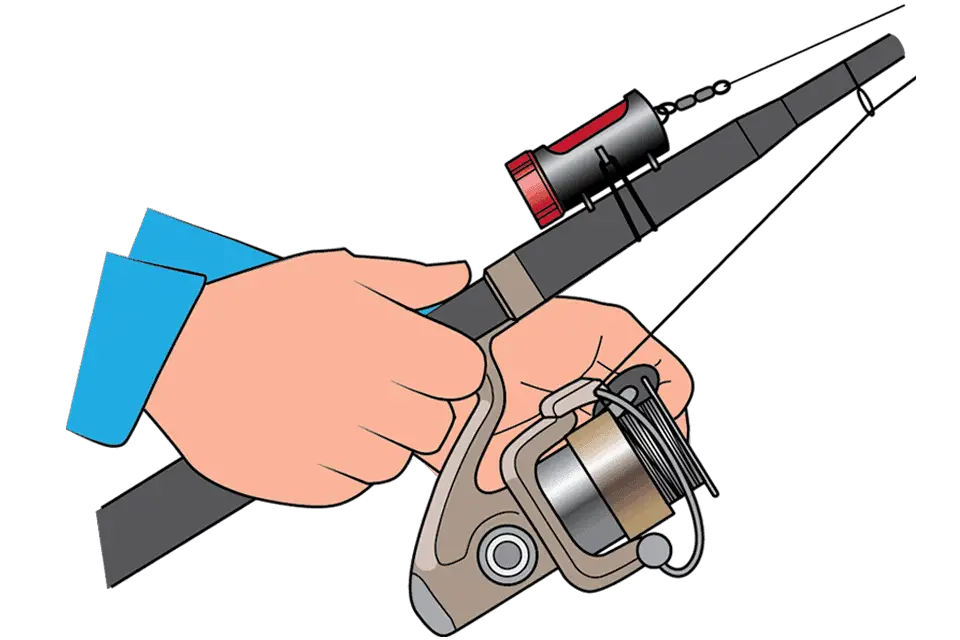
Most fish put up a decent fight.
And we love it! There’s not much fun in fishing without the fight — which is why anglers keep going for bigger and bigger fish to prove their mettle. Once you’ve cast your line and set your hook in a fish, it’s time to reel it in.
Fish, once caught, can react in a number of different ways. Deepwater fish try to swim downwards into the depth, while shallow water fish can thrash around or try to swim away.
As they do this, the line in your reel is going to keep spooling out.
Don’t panic, and let them run until the reel line is over. Now, slowly angle the rod upwards without touching the reel.
If your fish is massive, your rod will likely bend a lot. This is expected and a good indicator of how long the fight is going to be.
With a big fish, you can’t just go all out and keep pulling up and reeling in. The fish might be way too powerful for your line strength, and this can break your line.
The key here is to tire it out. It’s called playing the fish.
First, pull the rod upwards to a 90° angle without touching the reel, so the fish comes closer to the surface. Then, quickly lower the rod to a 45° angle as you reel in a little bit. Now the fish is a little closer to you.
Keep alternating these actions for the fish to be pulled towards you. If you take your time, the
fish will tire out during the entire process.
That’s where your line strength is essential — as well as your technique.
Keeping the fish underwater at an angle and letting them spend their energy for a few moments gives you the upper hand of being able to finally reel them in when they’re exhausted.
Smaller panfish tire out quickly, while the bigger ones put up a mighty fight.
Chapter 6: How to Catch Fish
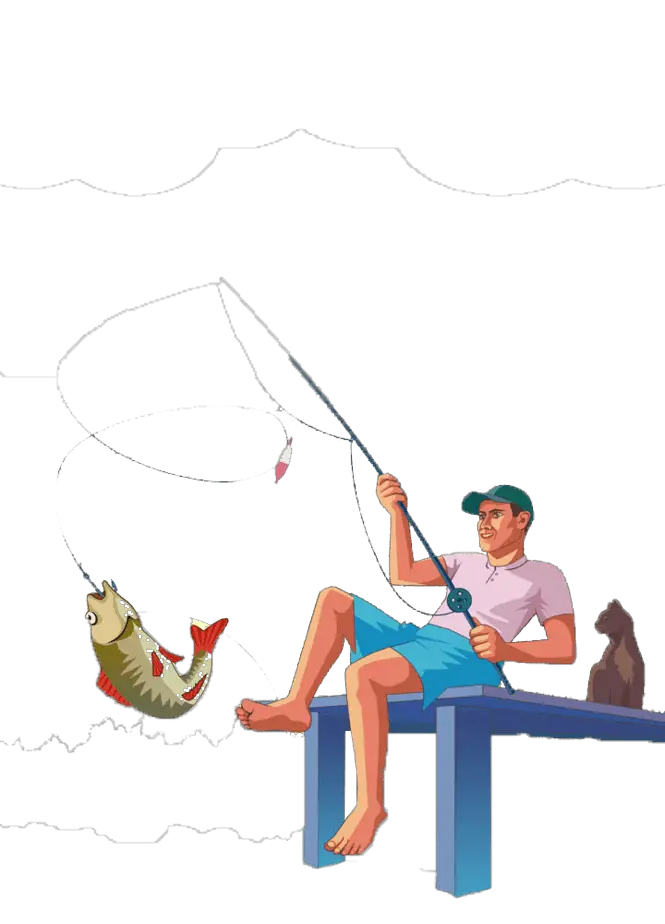
Now that you’ve caught your fish and played it (or fought it!), it’s time to land the fish.
It’s essential to have the right technique while landing your fish since being careless at this time can cost you your fish! It’s very disappointing to lose your fish during landing after you did all the hard work of catching it!We want to ideally avoid the fish flopping around on rocks or the ground as much as possible.
Netting
After reeling the fish to you as close as possible, just at the surface of the water, have a landing net ready in your other hand.
Gently scoop up the fish head-first into the net. It’s crucial to go head-first because most fish are traumatized at the sight of the net and will suddenly get a renewed burst of energy and try to jump out of the net.
Rubber nets are the best ones to use since they are expandable and non-abrasive to the fish’s skin even as it struggles.
It’s also easy to transport and doesn’t get tangled with your hooks and equipment. Use a landing net with a more extended handle to give you more reach as you scoop up the fish. Even if you don’t use a net, you can always reel the fish in and set it down on the ground.
However, this is considered riskier. Without a net, a fish will thrash around on the bare ground and can even escape back into the water.
You can also get seriously injured while trying to grab onto a fish with your bare hands. Most of them have sharp spines or fins.
Lip/Gill Flap Compression
There is a better way to land fish than just pulling it out of the water and setting it down. You should always know your fish really well.
Do your research so you can identify the most common fish: perch, crappie, walleye, rainbow trout, king salmon.
You should know your fish well because some fish are toothless and some aren’t.
If you think you’re not going to be sure about identifying the toothless fish vs. the ones with teeth, your best bet is to fish with a more experienced friend who’ll be able to tell you.
Lipping
ok. It shouldn’t be too difficult to remove the hook since you’ve immobilized it.
When the fish is close to you or your boat, and you’ve identified that it’s a toothless fish, you can reach down and place your thumb inside the mouth of the fish and gently pick it up.
Putting your thumb inside the fish will effectively immobilize it, and it won’t thrash around.
You can gently pick up the fish and keep it in a safe place (a livewell or fishbox) where it won’t be able to jump around too much (especially not back into the water!)
Gill Flap Compression
If you’ve identified your fish as one that has teeth, do not try to put your thumb in its mouth. Fish can have extremely sharp teeth, and you could lose a finger (or two!)
This is where the gill flap method comes in handy. All fish have gills on the side of their body and protective flaps over them.
As the fish is moving alongside your boat, place your hand behind the fish and then slowly grab the fish by holding the gill covers on either side of the fish and lifting it up.
Be careful to hold the gill flaps or covers and not directly touch the gills themselves. You have to press firmly enough for the fish to be temporarily immobilized while you pick it up.
If you don’t do it firm enough, you could scare the fish, which will slip out of your hands and thrash around.
If you’re too firm, you could injure the fish, which reduces its survival rates after releasing it into the water.
Even if you’re planning to eat your catch, it’s recommended that you don’t maim it or put it under too much stress since that can cause the fish to release toxins.
Whether you’ve used the lipping method or the gill flap compression, lift the fish into your boat or pier and then quickly remove the hook.
If you’re catching-and-releasing, a good rule of thumb is not letting the fish stay out of water for longer than you can hold your breath.
Just a few seconds to admire the creature and have a friend ready with a camera (for proof of your catch!) and then back into the water it goes.
Chapter 7: How to Clean a Fish

When you’re planning to turn your fresh catch into dinner, it’s important to take precautions that ensure it stays as fresh as possible until you cook it.
The best way to store fish is to keep it in either a livewell or a cold storage fishbox. Never leave it in a dry bucket, especially on a hot day.
You’d be surprised at how fast it can go bad. And you don’t want to go hungry just because you let your fresh catch rot.
When using a livewell, make sure to use the same water from the lake/pond/river you caught it from!
Scaling fish
Most fish have sharp scales that have to be removed before you think about cleaning or cooking them.
There are a couple of ways to remove the scales, but the most common and effective way is to remove the scales with a dull knife or scalper before you skin it or cook it.
Other methods are to peel out the skin with the scales, but this can be significantly messier and harder to do.
1. Keep the fish under running water and give it a few wipes with a wet cloth to get rid of all the slime.
2. Soak the fish in a bowl of water for about 10 minutes. This will soften the scales and make it easier to remove.
3. Cover your countertop or board with some disposable material, like newspaper or plastic. Scales are very messy and get everywhere, so it’s easier if you can just scoop up sheets of newspaper and throw it in the trash.
4. Place the fish on a countertop or board and hold the tail of the fish to keep it secure. Now, take your tool of choice. A dull, narrow knife works perfectly fine, but if you’re doing this often: consider buying a fish scaler (which looks something like a comb)
5. At a 45°, hold the dull side of the knife and start making swift, firm strokes along the body of the fish from tail to head.
The scales should start falling off with each stroke of the knife. Continue until all the scales have fallen down, and then flip the fish and do the same on the other side as well.
6. Rinse the fish under water for any remaining sticky scales to fall out. Your fish should be completely free of scales!
7. Feel free to also take this opportunity to rid your fish of its fins.
Now that you’ve scaled your fish, it’s time to clean the entrails.
How to clean a trout fish gutting 101
Whether you’re planning to eat your fish whole or cut it into fillets or steaks, you need to gut the fish.
You can’t cook it with the insides! It’s not only gross but will also release fluids and slimy stuff into the actual flesh of the fish, rendering it inedible.
Cleaning fish is actually relatively simple.
1. Work on a clean surface, like a tabletop or a cutting board, and have a supply of running water close by, like a tap or a hose.
2. Place the fish on its side, and with a sharp knife, make a clean, shallow slit along the tail just before the gills of the fish. Make sure your cut is clean and goes straight along the side of the fish. Don’t hack away and destroy the flesh.
Also, ensure that you’re not cutting too deep into the fish, or you can puncture the intestines, which can cause a very slimy and messy affair.
3. Using either a spoon or your gloved hands, spread out the body (butterfly it) and reach into the cavity and empty out all the guts into a disposable container or bag.
You want to ensure you’ve gotten out the stomach and intestines, and other organs. If you see any dark-colored tissue, cut around it and get rid of that as well.
These can be pouches of a dark oily substance that changes the taste of the fish.
4. Make sure you’ve gotten out all the entrails. You’ll also want to cut off the head and the tail unless you’re keen on eating those parts too! Some fish, like trout, are typically eaten with the head on.
5. Make sure you haven’t left the kidney near the backbone. Fish aren’t too bloody and can be quite clean inside once you’ve taken out all the organs and tissue.
Now rinse this area thoroughly under running water until it looks clear.
6. Clean your surface area with the water as well, after disposing of all the fish bits.
Now your fish is ready to cook!
Bonus: Checklist for Fishing
Here is a handy checklist for fishing, so you don’t forget to pack everything before setting out!
There’s nothing like the frustration of catching your fish and then realizing you forgot your landing net in the garage.
Equipment/Tackle
- Your State License
- A fishing rod and reel
- Line that’s either monofilament or braided line with the pound test you require: anywhere from 4 pounds to 12 according to the fish you’ll encounter
- Fishing weights
- Fish hooks (6-10 size)
- Optional: A bobber so you know when a fish has bit the bait
- A range of baits for different kinds of fish. Also, pack some lures. You’d be happy to have some options while you’re fishing so you can see what works best.
- Fishing net
- Knife for cleaning fish
Clothing
- Rain gear in case it rains!
- A hat in case it’s too sunny.
- Fishing vest
- Gloves
- Sunglasses to protect your eyes from glare
Emergency
- First aid kit
- Duct tape
Other necessities
- Food (something portable like sandwiches)
- Water bottles and any other drink
- Lip balm
- Sunscreen
- Hand sanitizer
- Towel
- Fresh pair of clothes
Ingredients
- Spices or sauces if you’re planning to cook your fish!
There are a lot of regulations to keep in mind when fishing.
A good idea is to purchase a booklet of regulations at the same time as shopping for your tackle in a tackle shop or while getting your license. That way, you’ll be on the safer side and avoid trouble.
Especially if you’re planning to eat your fish for dinner, there’s a limit on the number you’re allowed to take home.
The regulations are there for a reason: to protect fish and make sure there’s enough fish for everyone. You can read about two Texan anglers who got greedy and went over-regulation here!
Final Words
Staying safe and smart while you get into your new hobby can make a world of difference. You’ll rarely find someone who treats fishing like a hobby for a couple of seasons and then puts it to bed.
Once you join the angler community, it’ll probably be for a lifetime!
Don’t let that scare you if you have commitment issues! Fishing is an incredibly rewarding sport.
Here are a couple of reasons why I love it, and why I think you will too:
- It satisfies some kind of primal instinct we all have to hunt!
There’s nothing like fishing for your own food and cooking it yourself to feel like a self-reliant man vs. wild. In a world where there are so many shortcuts and after living in a city all my life: fishing made me feel grounded to nature. - President Herbert Hoover said, “All men are equal before fish.” and he’s right. The best anglers don’t look a certain way.
Anyone can fish, and it’s a sport that welcomes everyone. Even if you look at the anglers who catch 400 lbs fish, it’s more about skill and experience than strength! - Fishing is a simple pleasure.
Even on days where you don’t catch anything, it feels great to be able to devote a day just to bask in the sun and breeze while sitting on a pier or in a boat. It’s like a beach day or a spa day.
Whatever your reason may be, know this: fishing is a lot like life.
At the end of the day, it’s less about the fish you catch but about fishing. Just like life is about the journey, not the destination.
Most importantly, don’t forget to have fun! And teach your kids how to fish!

